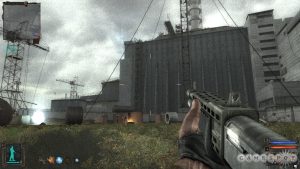Ukraine’s state-owned nuclear energy enterprise Energoatom has reported today that Russian military forces have transferred control of the Chernobyl nuclear power plant back to Ukrainian operators and have fully left the area.

On Wednesday, there were indications that Russian forces had begun withdrawing from the nuclear power plant and returning to Belarus, which were noted by Pentagon officials who relayed this to American and international media organizations. Just a day before, Russia said it would reduce military activity in the areas around Kyiv and Chernihov. This was further backed up today by MotolkoHelp, a credible source in tracking Russian military presence in Belarus, who reported that a column of about 100 Russian military vehicles were spotted heading up the R-35 highway to Belarus from the direction of Chernobyl. After initially saying that a small number of Russian forces remained, Energoatom reported that “According to the staff of the Chernobyl nuclear power plant, there are now no outsiders on site.” Both Ukraine and the United States have signaled skepticism about Russian troop withdrawals, stating that they are more so regrouping, repositioning, and rearming for future offensive operations towards Kyiv, which have largely failed to make any significant gains in recent weeks, or shifting assets to bolster other fronts.
There have also been increasing reports of radioactive contamination and illness amongst Russian forces due to a lack of situational awareness in the area they are in and a general lack of personal protective equipment suited for contaminated dust. On Monday, Reuters reported that Russian forces were seen traversing the highly radioactive “Red Forest” when they took over the plant on Febuary 24 without any radiation protection equipment, citing plant workers who called the move “suicidal.” Valery Seida, acting general director of the Chernobyl plant, told Reuters that Russian forces were unaware of dangers posed by the area or just straight up disregarded warnings and that none used protective equipment while at the plant. As I had reported on previously, the increase in troop and vehicle movements around the exclusion zone kicked up a significant amount of contaminated dust, resulting in a spike in radiation levels for the area to about 50-100 microsieverts per hour. The UN’s International Atomic Energy Agency (IAEA) stated that the spike did not pose any danger to the general public in surrounding areas and levels have since returned to normal.
But what about the Russian soldiers? I have started to see reports (like here, here, and here) that claim that highly irradiated Russian soldiers experiencing acute radiation syndrome have started arriving in hospitals in Belarus. As I stated, radiation levels recorded around the plant were at 50-100 microsieverts per hour, which is some 10 to 20 times the normal rate. The IAEA considers a yearly exposure of 1 millisievert (1,000 microsieverts) to be safe, so at this rate a person within the radiation spike would experience a year’s worth of radiation in 10 to 20 hours without any protective equipment. Acute radiation syndrome typically occurs at exposures around 0.7 gray, which is 700,000 microsieverts. This means a person would have to be exposed for 7,000 to 14,000 hours at 50-100 microsieverts per hour, meaning this claim is most likely false. Nonetheless, Russian troops were exposed to radiation to some degree.

The origin of the acute radiation syndrome claim started on several Telegram channels without much evidence and was further promoted citing a Facebook post by a Chernobyl tour guide, who said “Have you [Russians] dug trenches in the Red Forest, bitches? Now live the rest of your life short.” While Russian soldiers who were in and around Chernobyl have been sent to hospitals in Belarus, it is most likely not for radiation sickness, but rather check ups and decontamination. Looking at the numbers, which have been echoed by several nuclear experts, these Russian soldiers almost certainly do not have acute radiation sickness. We cannot ignore the fact that these soldiers had radiation exposures that would be considered unsafe. Likewise, if he plant workers’ claims that they had no protective equipment is true, then they also likely inhaled irradiated particles. Those two together increase the risk of health complications down the road in life, but not enough to cause ARS as claimed.


